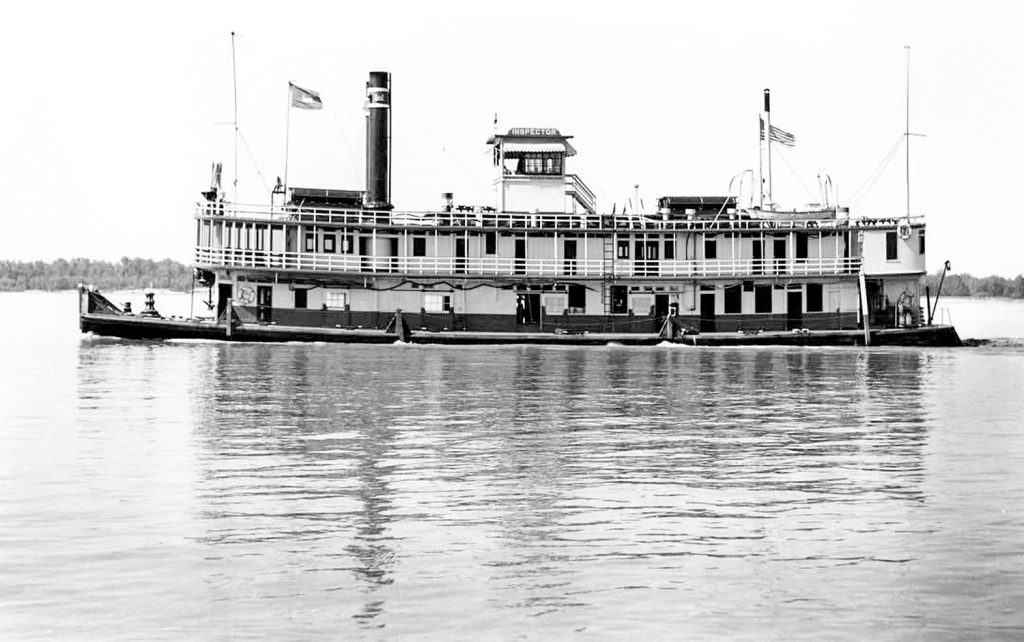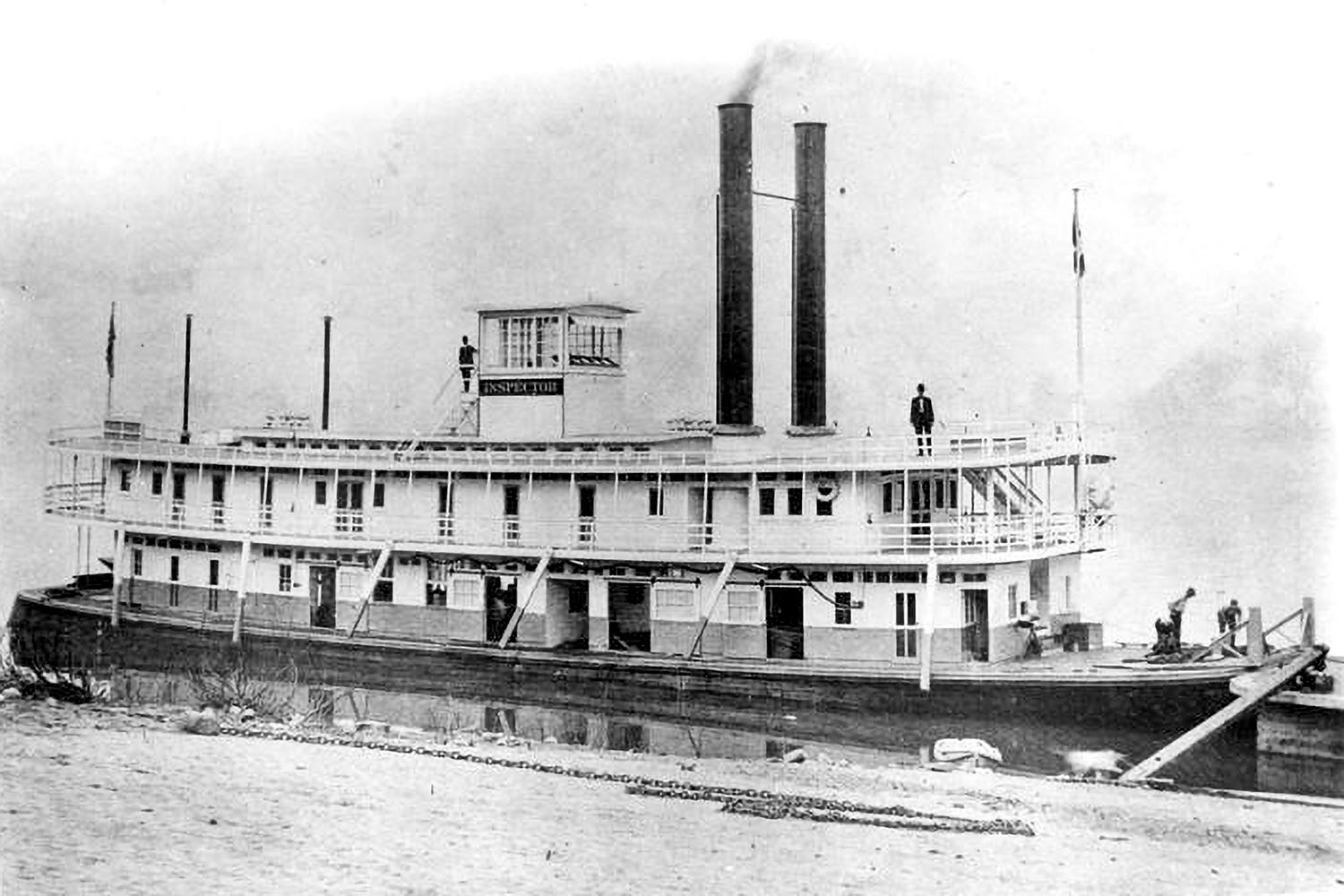The Charles Ward Engineering Works, Charleston, W.Va., had experienced success with building tunnel-stern, propeller-driven towboats such as the James Rumsey of 1903 and the A.M. Scott of 1906. In 1915 the U.S. Engineer Department contracted with Ward for the construction of a new boat of this design and propulsion. The boat had a steel hull that measured 144 by 30 feet and had a hull depth of 5.5 feet. The triple-expansion steam engines were 10’s, 15-1/2’s, 25-5/8’s—18-inch stroke. There is no mention found of the original boilers, but they were probably of Ward design and manufacture. As with the prior boats, the cabins and pilothouse were of wood construction.
The new vessel, named Inspector, looked like a traditional steamboat with full cabins, a tall pilothouse on the roof and two tall smokestacks situated forward. The exception was the absence of a sternwheel. The Inspector was assigned to the Memphis District of the Engineer Department. Way’s Steam Towboat Directory notes that the boat played the part of the Royal Barge in the annual Cotton Carnival at Memphis for many years. Way’s also says that Capt. Russell R. Randolph was a longtime master of the Inspector and that Capt. Howard Fenton was a pilot aboard for some years.

In 1927, what has been described as the most destructive flood in the history of the nation inundated much of the Lower Mississippi and tributaries. The flood affected the states of Missouri, Illinois, Kansas, Tennessee, Kentucky, Arkansas, Louisiana, Mississippi, Oklahoma and Texas. Some 27,000 square miles of land was flooded, and more than 700,000 people were left homeless. Approximately 500 lives were lost, and damages were estimated at $1 billion. That figure today would be over a trillion dollars.
The Inspector served as the flagship of the flood relief fleet working in the Red, Black, Tensas and Ouachita rivers. This extensive relief fleet involved more than 20 vessels. In the wake of the disaster, Congress passed the Flood Control Act of 1928, which incorporated much of Chief of Engineers Maj. Gen. Edgar Jadwin’s plan for the present system of levees and floodways. The Corps of Engineers dredge Jadwin, built by Marietta Manufacturing in 1933 and still in service, is named in his honor.
In 1929 the Inspector was sent to Paducah, Ky. where it underwent a rebuilding at the facilities of the Ayer & Lord Marine Ways. The Ayer & Lord ways were affiliated with the Ayer & Lord Tie Company, and it was an extensive marine construction and repair concern with a marine railway that could accommodate several boats at the same time. For some 30 years, Anne I. Baker was associated with the firm, and Capt. Fred Way in his novel The Log of the BETSY ANN includes a somewhat humorous interaction with her while the Betsy was there for repairs in 1926. Within this he refers to her as the “big boss” of Ayer & Lord.
Capt. William Henry Allison died aboard the Inspector in February 1939 at age 61. The Capt. Howard Fenton previously mentioned retired in September of the same year at age 70. In 1944, the boat received new Babcock & Wilcox cross-drum, marine water tube boilers. The Engineers must have been pleased with the performance of the boat as it was in continuous service to them for 31 years. It was included in the listings of the original 1945 issue of the Inland River Record, but in November 1946 it was offered at a public sale. The winning bidder was the Fabick Tugboat Rental Company of St. Louis, and in the 1948 IRR it appears in the “Off The Record” section as having been dismantled at St. Louis in 1947.
Caption for top photo: The Inspector new in 1915. (U.S. Engineers photo, David Smith collection)




